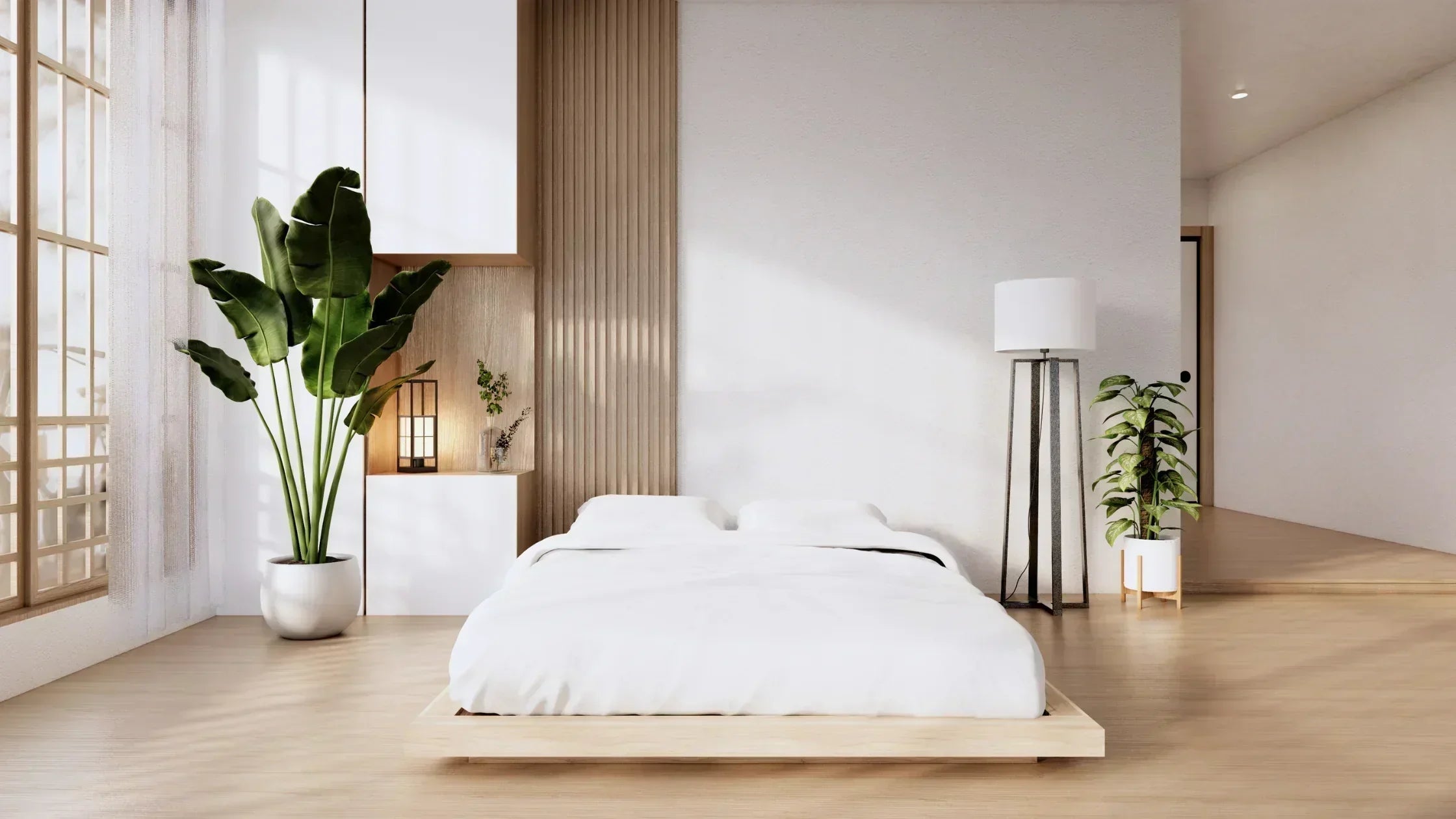Japanese aesthetics are all about simplicity, elegance, and a connection with nature. Even if you live in a compact studio or a cozy one-bedroom apartment, you can still create a peaceful, stylish space inspired by Japanese design. With a few thoughtful choices in decor, furniture, and layout, you can transform your home into a tranquil retreat that feels both functional and beautiful.
1. Keep It Minimal
Minimalism is a key aspect of Japanese interior design. Start by decluttering—get rid of anything you don’t need or use. Keep only items that serve a purpose or bring you joy. To keep your space feeling open and organized, use hidden storage solutions like under-bed compartments, multi-functional furniture, and floating shelves.

2. Use Natural Materials
Japanese interiors emphasize natural materials like wood, bamboo, paper, and stone. Try incorporating:
· Shoji screens: Traditional sliding paper doors that create a soft, diffused light.
· Tatami mats: Woven straw mats that add warmth and comfort.
· Wooden furniture: Light-colored wooden pieces that bring a natural, airy feel.
· Stone and ceramic accents: Stoneware vases, ceramic bowls, and pebble decor to connect with nature.
3. Stick to Neutral and Earthy Colors
A calming color palette is essential for a Japanese-inspired space. Stick to neutral shades like beige, white, gray, and soft brown. You can also bring in subtle earthy tones like muted greens or warm ochres for a natural touch. Keeping the colors soft and cohesive will make your apartment feel serene and inviting.

4. Let in Natural Light
Good lighting is crucial for creating a Japanese-inspired atmosphere. Maximize natural light by using sheer curtains or leaving windows uncovered. Mirrors can help reflect light and make the space feel bigger. If natural light is limited, opt for warm LED lighting or paper lanterns to create a cozy, glowing effect.

5. Add Indoor Plants
Bringing nature indoors is an important part of Japanese design. Houseplants like bonsai, bamboo, and peace lilies can add a sense of tranquility. Consider small indoor gardens, moss arrangements, or a simple ikebana flower display to enhance the Zen aesthetic.

6. Go for Low Furniture
Low furniture helps create a grounded, intimate atmosphere. In traditional Japanese homes, people often sit on the floor with low tables. To achieve this look, try floor cushions, a futon bed, or a low-profile sofa. This approach also makes a small space feel larger by emphasizing openness.

7. Create a Zen Corner
Having a small Zen space in your apartment can help you unwind and relax. All you need is a floor cushion, a small table, a candle, and maybe a water feature. Whether it’s for meditation, reading, or just a quiet moment, a Zen corner can bring balance to your home.

8. Add Traditional Japanese Decor
You don’t need to go overboard—just a few subtle touches can enhance the Japanese aesthetic in your home. Consider adding:
· Kintsugi pottery: Beautifully repaired ceramics with gold seams, celebrating imperfections.
· Calligraphy or Japanese prints: Simple artwork that adds cultural depth.
· Noren curtains: Fabric dividers for doorways or walls.
· Wabi-sabi elements: Decor that embraces natural aging and imperfections.
9. Keep the Layout Open
Japanese design prioritizes openness and flow. Arrange furniture so that it’s easy to move around without feeling cramped. Multi-functional pieces like foldable tables or nesting stools can help keep things practical while maintaining an uncluttered look.

10. Use Soft, Natural Textiles
Natural fabrics like linen, cotton, and silk add warmth and comfort to a Japanese-inspired home. Try woven straw rugs, soft throw blankets, and organic cotton cushions to create a cozy but minimalist feel.

Final Thoughts
Incorporating Japanese aesthetics into a small apartment is all about simplicity, harmony, and natural beauty. By focusing on minimalism, organic materials, and traditional design elements, you can create a space that feels peaceful and balanced. Start with small changes and refine your home over time to reflect the timeless charm of Japanese design.





Share:
The Role of Tatami Mats in Japanese Culture and Home Design
The Secret to Japanese Organization: KonMari Tips for Tidying Up